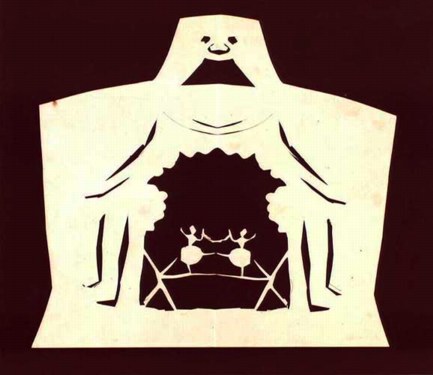
The way I remembered it, Hans Christian Andersen was a perennial houseguest of wealthy patrons and would make his intricate paper cuts as a sort of hostess gift. There are something like a thousand still in existence, which would make for a lot of visiting. But the way the Royal Library in Copenhagen describes it makes it sound a little less moochy:
When Andersen began to turn the coloured pieces of paper around the steady tips of his scissors, none of the children around the table knew what was going to happen. He liked to start by talking a little, and in doing so would incorporate an improvised fairy-tale relating to the theme or subjects of the paper-cut. Frequently he would stop in order to add a new longitudinal or transverse axis on the paper so as to break the symmetry and provoke new angles and perspectives. These corresponded to the devices he would employ as a storyteller, whether orally or in writing, when he started "editing" - in a filmic sense - the chronology, or suddenly reshuffled the composition in order to introduce new angles, scenes and persons.The Hans Christian Andersen Museum in Odense has digitized another hundred or so paper cuts, including these two. Those are not just jugglers there, btw, but "point-headed diabolical-looking jugglers," my favorite kind.
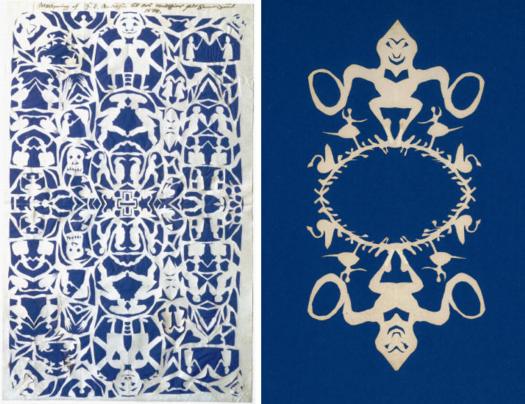
Odense has also digitized two of the 16 known picture books Andersen made for the children and grandchildren of friends and family. They're amazingly modern-looking collages of paper cuts, drawings, found images, and stuff. [A couple of years ago, Steve Roden compared them to the collages and shadow boxes of Joseph Cornell.] Here's the first page from a book Andersen, and his friend Adolph Drewsen [1] made for the 1-yo great-granddaughter of the guy who discovered him, Jonas Collin.
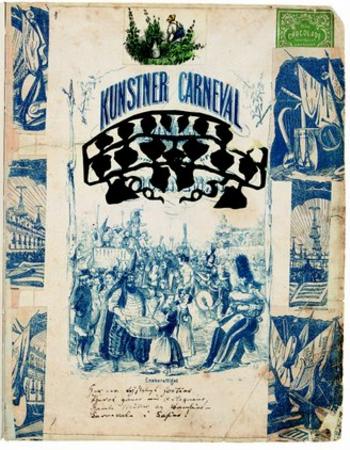 The verse reads,
The verse reads,
Here's a merry FestinoDrewsen, it turns out, was Collin's son-in-law, and grandfather to the book's recipient, Astrid Stampe. He and Andersen created a book for three Stampe grandchildren, and in 1984, a descendant of Christine Stampe published a facsimile edition of her picture book, which Andersen had made for her third birthday in 1859. The Royal Library also published the complete 122-page Christine's Picture Book online in 2005.
Pierrot along with Harlequino,
Ancient mother and Bambino
Carnival inside Casino!
Hans Christian Andersen's Paper Cuts in The Royal Library [kb.dk]
Odense City Museums > Hans Christian Andersen > Digital Collections [odense.dk]
Check out the digital version of Christine Stampe's Billedbog [kb.dk]
Buy a copy of the 1984 English edition of Christine's Picture Book: Hans Christian Andersen and Grandfather Drewsen [amazon]

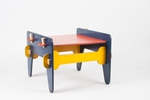
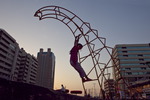
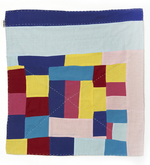
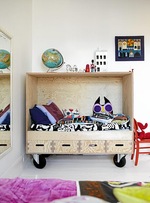
Wow and wow! Gorgeous!
I SO want to make wallpaper for the kids' room out of the pointy-headed diabolical jugglers. Awesome!